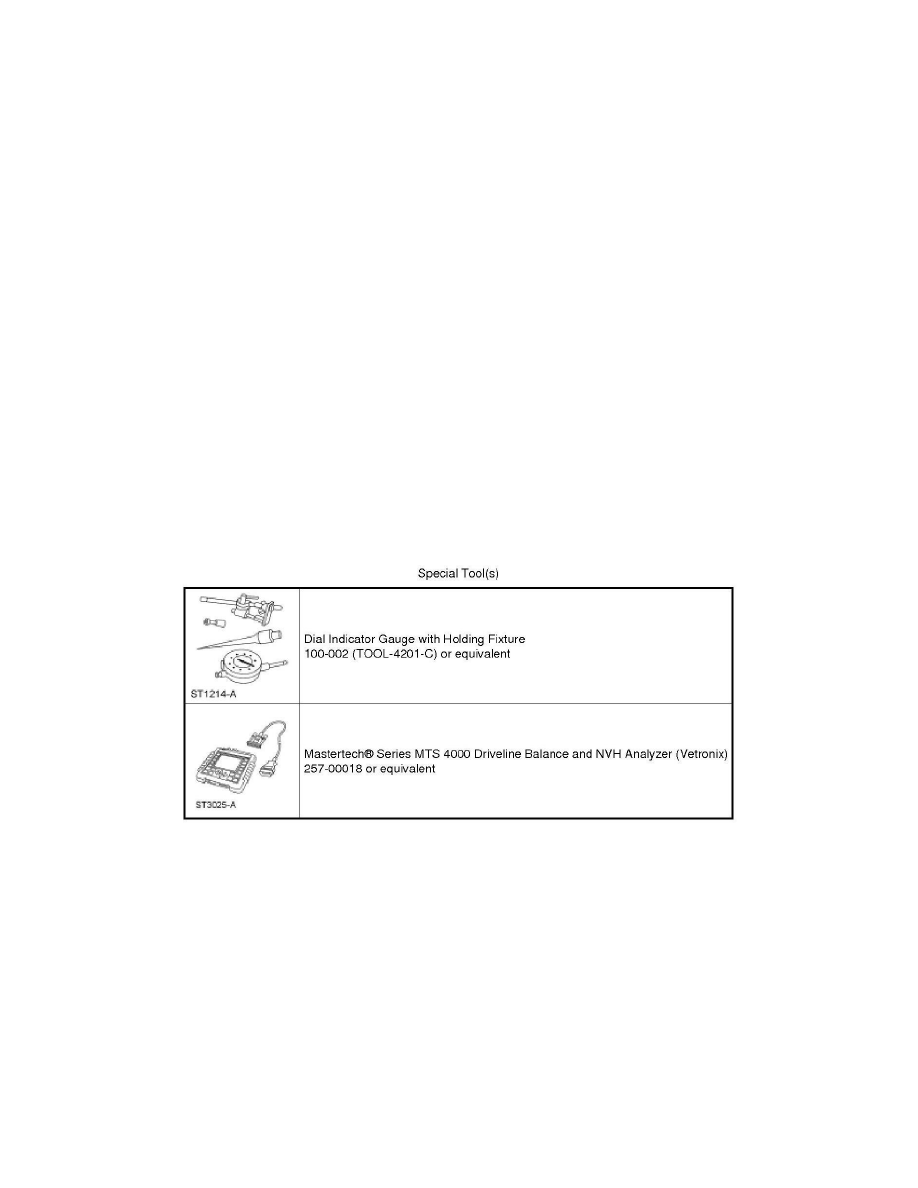F 350 4WD Super Duty V8-6.4L DSL Turbo (2008)

State 1: Tighten to 65 Nm (48 lb-ft).
State 2: Tighten to 130 Nm (96 lb-ft).
State 3: Tighten to 200 Nm (148 lb-ft).
State 4: Tighten to 265 Nm (195 lb-ft).
For F450 and F550 vehicles:
State 1: Tighten to 100 Nm (74 lb-ft).
State 2: Tighten to 200 Nm (148 lb-ft).
State 3: Tighten to 300 Nm (222 lb-ft).
State 4: Tighten to 400 Nm (295 lb-ft).
F250, F350 4WD vehicles with SRW and 3962 mm (156 inch) or 4369 (172 inch) wheel base
9. If the shudder or vibration condition still exists, replace the center bearing support bracket with the part listed in table to raise the center bearing
support height. For additional information, refer to the Driveshaft-Exploded View. See: Diagrams
10. NOTE: Once a new center bearing support bracket has been installed, a shudder or vibration may occur when the vehicle is unloaded. Shims can
be used to lower the center earing support and minimize this condition. Up to 3 shims (per side) may be installed between the center bearing
support bracket and the center bearing support carrier bracket. The center bearing support bolts must be replaced using the part listed in the table
or new grade 5 bolts (7/16 inch x 14). The bolts should be long enough to extend at least 3 threads past the nuts.
Measure the driveline angle again. For additional information, refer to Driveline Angle Measurement. See: Driveline Angle Measurement
-
If necessary, remove and discard the 2 center bearing support bolts and install shims to lower the center bearing support.
-
Install 2 new bolts and tighten to 70 Nm (52 lb-ft).
Driveshaft Runout and Balancing
Driveshaft Runout and Balancing
Driveshaft Inspection
NOTE: Driveline vibration exhibits a higher frequency and lower amplitude than high-speed shake. Driveline vibration is directly related to the speed
of the vehicle and is noticed at various speeds. Driveline vibration can be perceived as a tremor in the floorpan or heard as a rumble, hum or boom.
NOTE: Refer to Specifications for all runout specifications.
1. NOTE: Do not make any adjustments before carrying out a road test. Do not change the tire pressure or the vehicle load.
Carry out a visual inspection of the vehicle. Operate the vehicle and verify the condition by reproducing it during the road test.
-
The concern should be directly related to vehicle road speed, not affected by acceleration or deceleration or could not be reduced by coasting
in NEUTRAL.
2. With the vehicle in NEUTRAL, position it on a hoist. For additional information, refer to Vehicle Jacking and Lifting.
-
The driveshaft should be kept at an angle equal to or close to the curb-weighted position. Use a twin-post hoist or a frame hoist with
jackstands.
